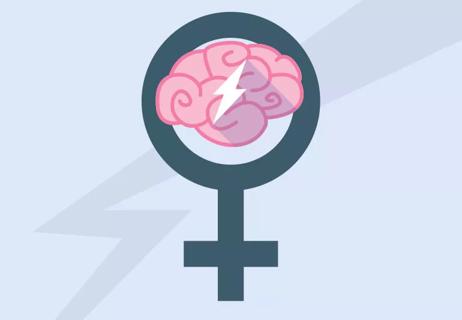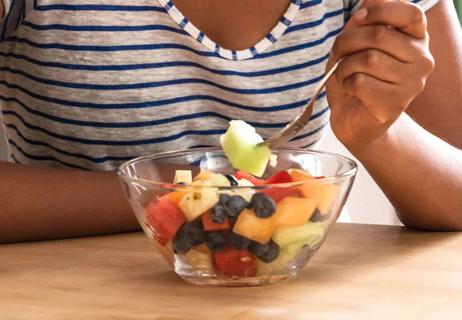It can be overwhelming, but habit changes help lower your risk of another stroke

Literally everyone can benefit from a healthy diet. But after you’ve had a stroke, making positive changes in the way you eat can help you recover and prevent another stroke.
Advertisement
Cleveland Clinic is a non-profit academic medical center. Advertising on our site helps support our mission. We do not endorse non-Cleveland Clinic products or services. Policy
Choosing healthy foods can help you manage your blood pressure and cholesterol, which can lower your risk of having another stroke.
“Everything we eat affects our whole entire body, including our heart,” says registered dietitian Julia Zumpano, RD, LD, “so it’s important to make the best choices you can to support all whole-body health.”
Not sure what steps to actually take? Zumpano shares tips for making better food choices and recommends dietary changes that will help you meet your goals and improve your health.
A healthy diet helps your body fend off risk factors for having another stroke. Choosing healthy foods can help you:
“Everything we eat affects our whole entire body,” Zumpano says. “It’s always important to make the best choices you can to support whole-body health, but this is especially true when you’re recovering from a major health event like a stroke.”
She shares tips for changing your diet after a stroke and making food choices that will help you stay healthy for the future.
To keep your heart healthy and your stroke risk low, salt (next on the list) isn’t the only thing you’ll need to scale back on. You’ll also have to pay attention to trans fats and saturated fats, which are associated with high cholesterol and increased risk of cardiovascular disease.
Advertisement
Cholesterol is a fatty, waxy substance that your body makes and that’s found in animal products foods. You need some cholesterol to maintain cell health, but having too much of it in your blood increases your stroke (heart disease) risk.
“You can lower your cholesterol by watching how much unhealthy fat is in the food you eat,“ Zumpano says. The best way to do this is by avoiding ultra-processed foods, which have been altered to include lots of fats, starches, sugars and hydrogenated oils, ultimately raise your cholesterol, your blood pressure and your stroke risk.
This includes foods like:
“Replace them with whole foods, which are basically the opposite of processed foods,” Zumpano encourages.
Eating too much sodium can cause you to retain fluids, which increases your blood pressure — and that’s a stroke risk.
But the average American consumes about twice as much sodium as they should. The American Heart Association recommends no more than 2,300 milligrams of sodium per day, or the amount found in a single teaspoon of salt.
“A low-sodium diet is one with less than 2,400 milligrams of sodium a day,” Zumpano states, “but most heart patients need to restrict their sodium to even less than this.” After a stroke, your healthcare provider may recommend that you eat no more than 2,000 milligrams of sodium each day.
One big way to lower your sodium intake is to remove processed foods from your diet. They often use sodium as a preservative, so even though they don’t always taste super-salty, they’re often loaded with sodium and other unhealthy ingredients that can negatively affect your heart.
“The second step is to eliminate any salt you’re adding to your food,” Zumpano advises. “Look for hidden sources of salt, too, including seasonings like garlic salt, onion salt and meat tenderizer, and high-sodium condiments like salad dressing, soy sauce and teriyaki sauce.”
Of course, all of these salty add-ons were created to give food some extra flavor. So, does that mean your post-stroke diet is doomed to be a bland one? Definitely not, Zumpano says.
“Experiment with adding more herbs and salt-free spices to your cooking,” she suggests. “This will help you add flavor to food without adding unnecessary salt.
What you eat is just as important as what you avoid, so start figuring out ways to incorporate one-ingredient foods (known as “whole” foods) into your diet.
Advertisement
“Basically, if it’s found alone in nature, it’s probably a whole food,” Zumpano explains. Heart-healthy whole foods include:
Try to work whole foods into every meal and snack. For example, choose baby carrots, sliced apples or plain Greek yogurt for snacks. Try a hearty, nutritious soup (not from a can!) for lunch. And make entrées like chicken breast or salmon the centerpiece for a great dinner.
As part of a heart-healthy diet, fiber can help reduce your cholesterol and with it, your overall risk for cardiovascular disease.
Dietary fiber is the part of plants the body can’t digest. As it passes through your body, it affects the way your body digests foods and absorbs nutrients.
“Soluble fiber binds to the bile in your gut, which helps eliminate it,” Zumpano explains. “Because bile is made of cholesterol, a diet high in soluble fiber can lower cholesterol.”
Soluble fiber is found in foods like oats, legumes, root vegetables, apples, pears, citrus fruits, chia, flaxseeds and psyllium husk.
Advertisement
“How much fiber you eat affects not only your cholesterol level and risk for stroke, but it also has other health benefits,” Zumpano says. “It helps control your blood sugar and helps with weight management, among other things.”
An added bonus: High-fiber foods can actually make you feel fuller so you’re less tempted to overeat.
Marketing can be a real bummer: Even though a food’s packaging may claim that it’s “healthy” or “low sodium,” that doesn’t necessarily mean it’s good for you.
“Comparing labels will help you start to better understand which foods are high and low in sodium,” Zumpano says.
In the U.S., law requires most foods to have nutritional information listed in a standard way. Get in the habit of reading the nutrition facts panel on each product’s label, which will tell you how much sodium and saturated fat the food contains. Labels also give you a key piece of information that many people often overlook: serving size.
“One serving may seem to have a low amount of sodium or saturated fats, but the serving size on the label may be much smaller than what you normally would eat at a sitting,” Zumpano warns.
In a perfect world, you could take the time to prepare all of your meals using fresh, healthy ingredients. But that isn’t always possible. Still, you can make better choices without spending all of your time in the kitchen.
Advertisement
Learning to meal prep can help you eat healthier without dedicating every spare moment to thinking about what you’re eating.
“Meal prep can really help out when times are busy,” Zumpano notes. “You can prep some core meals on the weekend or on your day off to have ready in the fridge or freezer for you when you’re really pressed for time.”
She also suggests identifying at least four quick, easy meals and keeping all of the ingredients on hand so that you can whip them up quickly.
“Have some prepped meals in your freezer or fridge ready to go, and keep frozen options available, too,” she continues. “Think vegetables, chicken breast, individually wrapped fish, precooked brown rice or oatmeal — things that can be cooked up within five to 10 minutes can make a quick meal.”
In the amount of time it would take you to go out and buy a fast-food cheeseburger, you can have a healthy meal cooked and ready — if you plan ahead appropriately.
If you know you’re prone to snacking (umm, who isn’t?), it’s a good idea to set yourself up for snacking success. Sort of like meal prepping, pre-populating your fridge and pantry with healthy snacks can keep you from grabbing not-so-good-for-you choices while on the go.
“Prepackaged snack foods like potato chips, pretzels, crackers and even rice cakes and veggie straws are all highly processed, can often have high amounts of refined flour or refined sugars or sodium added to them,” Zumpano says.
Try to minimize how often you eat these foods, and instead, turn to natural snacks like veggies and fruit. You can swap out chips with carrot or celery sticks with hummus or apple slices and natural peanut butter to get that satisfying crunch, and make homemade popcorn with a olive oil and a sprinkle of Parmesan cheese instead of butter.
Don’t be afraid to let your family know why you need to make healthier food choices. You may even be able to get to help plan and prepare meals — and you never know what healthy, delicious recipes they might share.
“Having some form of accountability, like in the form of the buddy system, can be so helpful,” Zumpano says. “They can help you stay on track and reevaluate your goals as you go.”
Who knows: The changes you make in your diet may even encourage healthier eating habits among your family and friends!
If you’re feeling bored in the beginning, here’s a helpful reminder: Your taste buds slough off and regenerate every few weeks, which means they can adapt to new tastes and diets.
“Keep in mind that our taste buds can change over time,” Zumpano reassures. “A low-sodium diet may seem bland at first, but the more you follow it, your taste buds will adjust. Soon, foods you’d been used to eating will taste very salty.”
Let’s address the elephant in the room: Figuring out how to eat healthy foods every day can be really, really hard. In the beginning, at least, it involves careful planning, lots of meal prep and no small amount of self-restraint.
It’s doable, though, we promise. No matter how you ate before your stroke, you can make changes that will impact your health and your whole life.
A dietitian can help you figure it all out and support you along the way. They’ll take into account your current eating habits, preferences and dislikes to tailor a specific plan just for you, which can lead to success and higher satisfaction.
“Making healthy food choices is a major step in the right direction,” Zumpano says. “A registered dietitian can help you choose the right foods and teach you how to plan and prepare them to improve your health for the long run.”
Learn more about our editorial process.
Advertisement

Seek immediate medical attention for sudden loss of balance, vision changes, slurring, facial droopiness and limb weakness

Strokes in the left side of the brain are more common and the effects are typically more noticeable

Your age, the type of stroke you had, the cause and the location can all impact your recovery

Hormonal changes and pregnancy are some factors unique to women

What you eat may protect you from a ‘brain attack’

Know the warning signs + decrease your risk

The short answer from a vascular neurologist

Watch for depression, behavior changes

The best parenting style balances enforcing rules and showing plenty of love

Tips include cutting back on sugar, focusing on exercise and managing stress

It can be harder to let go when you’ve invested time, energy and emotions — but it might be the healthier choice long term